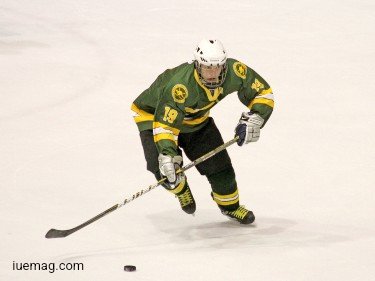

The NHL Evolution: How It Started And Where It’s Going
 Hockey has significantly changed since the late 1800s when it was played outside with frozen dung and bent tree branches. As the NHL celebrates its 100th season, it's hard to imagine a game without Zambonis, composite sticks, instant replay or famous NHL picks.
Hockey has significantly changed since the late 1800s when it was played outside with frozen dung and bent tree branches. As the NHL celebrates its 100th season, it's hard to imagine a game without Zambonis, composite sticks, instant replay or famous NHL picks.The NHL is arguably the largest pro hockey league outside of North America. Beginning with four teams in 1917, the NHL has expanded over the last 100 years to its current level of 32 teams. With a player pool that reflects a worldwide talent pool, including some superb young players, it seems sure that the NHL will continue to make inroads on European competitors and become even more intriguing to Europeans in the coming years.
The Past and The Present
The game has moved all over North America, from the cold and rainy northeast to the warm and sunny southwest. As the league gets ready for its newest team, which will play in the dry heat of Las Vegas, it's hard to see where the game is going from here. The players are bigger, faster, and stronger now, and their gear is safer and lighter. Coaching has become more challenging. Players train for specific roles on the ice.
Although no one can say where the game will go in the next 100 years, here's a look at what we can expect along the way.
Equipment
“He flashed the leather. Got some wood on it. Went to the bench for a new twig.”
The language of hockey has a lot of history in it. Even though these idioms make you think of particular hockey gear, they also show how much things have changed. Where leather and wood used to be, there are now space-age composites, light plastics, and foams that allow players to move quickly, make quick shots (and stop them), and be safer than ever.
Gear has never been better for goalies who must save shots coming at them faster and more accurately than ever. Goaltenders now wear innovative foam-cored pads instead of deer hair-filled leather ones that grew heavier with water weight as games progressed, helping them to perform more consistently while remaining as light as ever.
Though it took some time to win over hockey's masked men, switching from solid leather straps with buckles to elastic and velcro has also been beneficial.
According to Joswiak, a pro rep with equipment manufacturer Brians Custom Sports, "Many goalies were reluctant on this shift and couldn't trust the idea of relying on velcro to hold the leg firm, but today we have had practically no troubles.
Almost every other manufacturer has now headed in this path. While the overall effects of these modifications may not seem significant, goal pads today weigh a quarter of what they did twenty years ago, and players can move and perform like never before."
Training and Conditioning
The data will be everything for the upcoming crop of NHL stars. A player's health, fitness, sleeping, and eating patterns, as well as a variety of other factors, will be analyzed using a variety of measures in addition to goals and assists. And we still have a ways to go before we can fully understand everything.
Mark Reilly, the founder of Systems Training Technology, says, "There are so many metrics now easily extractable through technologies and sports science. Sports have never been worth as much as they are now. As a result, industries are learning about sports and assisting in the evolution of sports.
Therefore, in addition to the constant background competition amongst athletes, you now have businesses actively attempting to identify their market niche. As a result, we're discovering a lot about how to enhance muscle memory, increase speed, and benefit athletes from hydration."
The former professional volleyball player Reilly created his program, an app that allows players to construct detailed profiles, adhere to diet and exercise regimens, and exchange information with coaches and parents keen to track their development. Another NHL player turned trainer Gary Roberts, one of his partners counts Steven Stamkos and Connor McDavid among his High-Performance Training clientele.
Roberts, a 23-year NHL veteran who discovered the advantages of appropriate training and conditioning at rookie camp with the Calgary Flames in 1984, believes that we now employ various tools to measure an athlete in significant ways. "Modern technology is used to understand each player's unique demands better and create tailored programs. This technology was just not available when I was a player."
Teams and players are more potent than they were 20 years ago, regardless of what the game looks like now. There is room for more improvement along the way; we hope these come soon.
Image Credits:Image 2: Kaz Andrew from Edmonton,Alberta, Canada, CC BY-SA 2.0, via Wikimedia Commons
Copyrights © 2025 Inspiration Unlimited - iU - Online Global Positivity Media
Any facts, figures or references stated here are made by the author & don't reflect the endorsement of iU at all times unless otherwise drafted by official staff at iU. A part [small/large] could be AI generated content at times and it's inevitable today. If you have a feedback particularly with regards to that, feel free to let us know. This article was first published here on 29th November 2022.
Overthinking? Uninspired? Brain Fogged?
Let's Reset That! Try iU's Positivity Chat NOW!

All chats are end-to-end encrypted by WhatsApp and won't be shared anywhere [won't be stored either].


